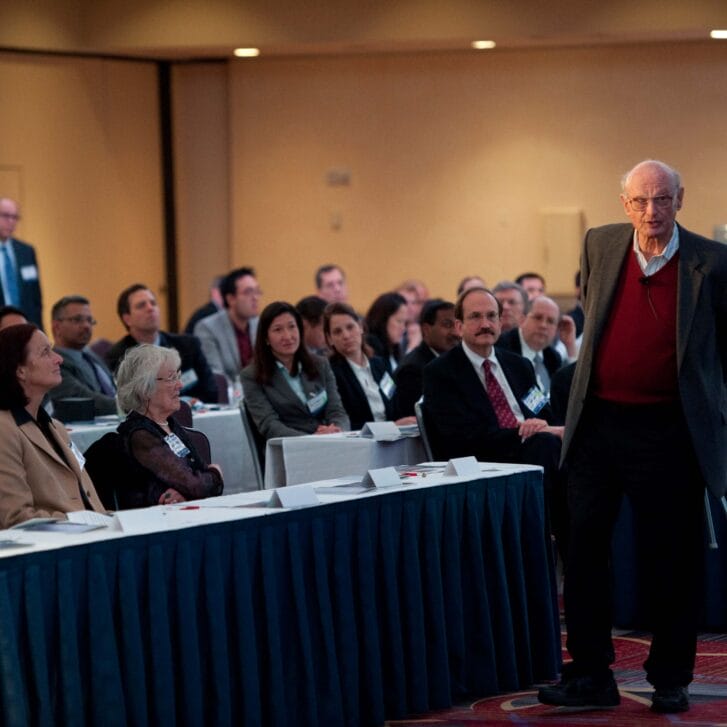With much fanfare, AT&T unveiled a world-changing technology at the 1964 World’s Fair: The videophone.
It generated great excitement, but failed miserably as a product. More than forty years later, its successor is set to impact business as much as the mobile phone or wireless email. Welcome to the age of ‘telepresence.’
Videoconferencing has been around for years, but telepresence takes it to a new level of richness and simplicity, creating a sensation that the other person or other people on the call are “right there” in the room with you. High-quality video and surround sound allow the crucial non-verbal aspects of communication to function at a distance, while backend improvements make video connections more like ordinary phone calls and less like cumbersome special events. Rich interaction with anyone, anywhere in the world, puts globalization on steroids.
Vendors such as Cisco, HP, BrightCom and Polycom are selling enterprise telepresence gear, with several service providers and carriers jumping into the market with managed offerings. This fall, Cisco introduced home telepresence equipment, priced at $599. Around the same time, Apple launched Facetime, a system for video-calling built into its iPhones and other devices. And Skype, which already offers free video-calling to its more than 500 million users, introduced an early version of multi-party videoconferencing.
Critics carp that Cisco’s gear is too expensive, that Facetime is too proprietary to Apple hardware, and that Skype is more of a tool to help young people to make cheap international calls than a common business tool. They’re right … “right” just like those who looked at AOL in the early 1990s and called online access “a toy,” those who dismissed social networking because Friendster was trifling, or those who saw no future in cable television because broadcast channels were already available for free. Sooner or later, someone will get telepresence right. The horserace among vendors is important if you’re an investor, but the bigger story is what the technology will mean for the marketplace.
Telepresence is already showing business benefits. Cisco, for example, cut its own annual travel budget by $400 million and substantially reduced its carbon footprint, in large part by requiring the use of telepresence instead of travel for internal meetings. The real impacts, however, will come as organizations figure out how telepresence can generate revenue and strategic advantages.
What is a company but a group of people working together, interacting with suppliers, partners, service providers, competitors and customers? Anything that increases the richness of that mesh of human interaction in a scalable way will accelerate performance, and will eventually be widely adopted. Telephones, air travel, fax machines, PCs, email, Internet access and mobile devices all fit that description. In a business environment that is increasingly fast, nuanced and global, the experience of immersive interaction across distance is a killer app.
No, you wouldn’t use a telepresence connection every time you’d ordinarily make a phone call, any more than you’d always choose a call instead of an email or a letter. High-bandwidth virtual meetings can’t replace afternoons on the golf course or other informal interactions that build productive business relationships. And as with any technology, telepresence needs a receptive organizational culture and repeated use to make its mark. Still, none of these cautionary notes trump the basic conclusion that telepresence will be a huge driver of competitive advantage for those who master it.
The business impact of technologies is defined less by whether the pioneers “got it right” (they never do) than by whether the innovation addresses a basic human or business need.
AT&T’s World’s Fair demonstration was a few years early, but history will—eventually!—show they were onto something big.

























